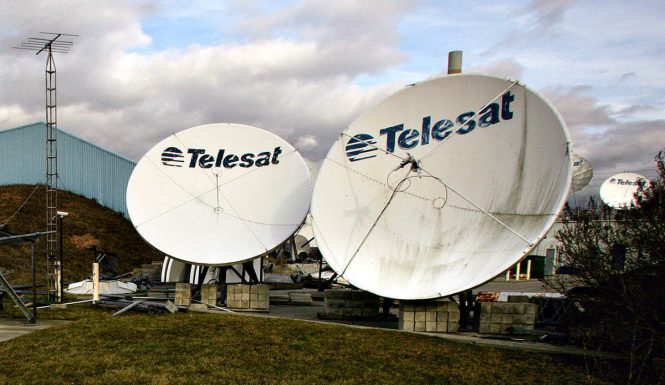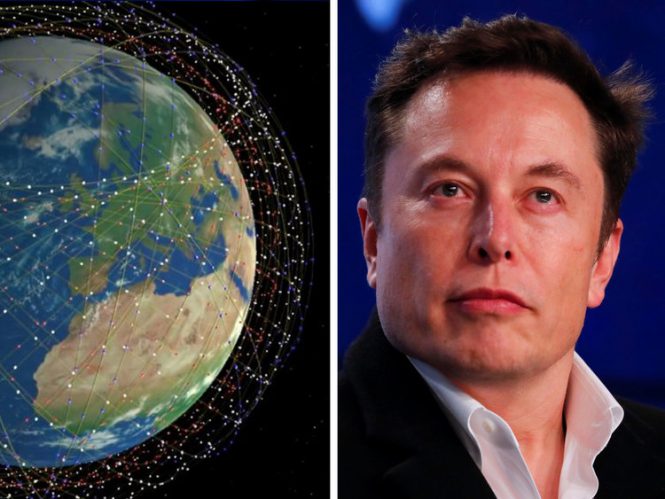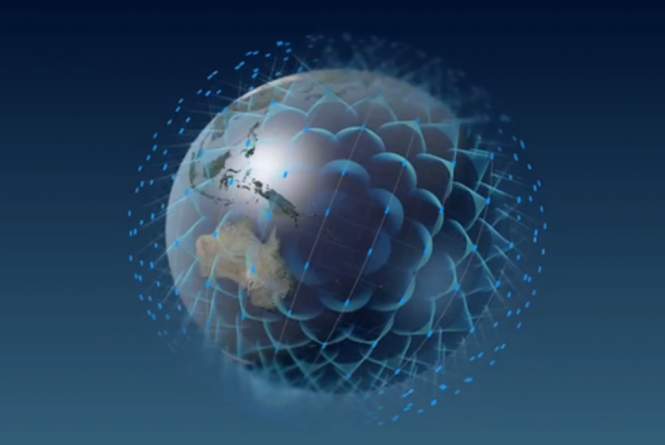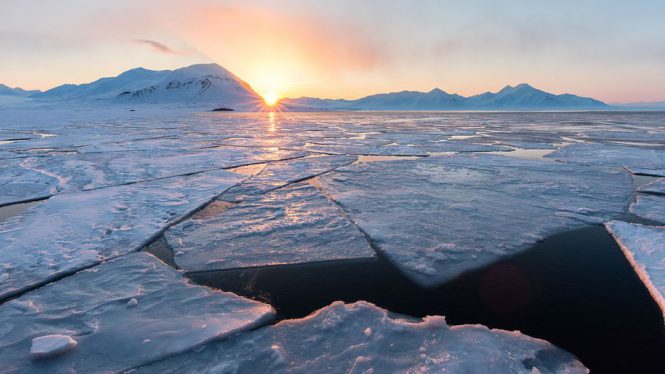
Much has happened since we last visited the wacky world of low earth orbit (LEO) satellite constellations and their use in providing improved broadband service to Canada’s rural and remote users. This past Tuesday, July 21, all of Iqaluit, the capital of the Territory of Nunavut was without communication services ; no Internet, no landline, no cell service, no cable TV – simply because it was raining ! In a first world country like Canada this is unacceptable. We need better broadband service in Canada’s North NOW.
There is a rash of breathless newspaper stories in the mainstream media touting LEO service as arriving soon to resolve our remote and rural broadband issues. I wrote about it before here, that Elon Musk is not coming to save us any time soon. I also wrote about the Chapter 11 bankruptcy of the early leader to provide LEO service to the Arctic, OneWeb, here. So where do we stand now on July 27, 2020 ?
Well on July 10, the US bankruptcy court of the Southern District of New York (SDNY) approved a joint $1 billion bid for OneWeb by Britain and Bharti Airtel. The UK government and Bharti Global, an arm of Bharti Enterprises, which part owns India’s Airtel, will each have roughly 45 per cent of OneWeb. The existing secured creditors, including SoftBank of Japan, OneWeb’s former biggest shareholder, will own the balance.
But the landscape has changed from before OneWeb’s descent into Chapter 11 in the spring. OneWeb’s original mission was to “connect the unconnected “ ; ie it wanted to provide broadband service to the millions of people around the world that do not have access to the Internet. The UK has invested $500M into OneWeb for other strategic reasons, mainly to mitigate the effects of Brexit on British industry. I sure hope they realize that it is going to cost them more, much more and that $500M was just the table stakes to play in the LEO game.
After Brexit, the UK would have been locked out of the EU’s Galileo mission. Its aerospace industry would have lost work and technology to the EU and the USA and it would have fallen behind. Investing in OneWeb, and taking the “golden share” that lets it decide who gets access to the network will let it be a cornerstone of new industrial policy for Britain. Jolly good show.
But a $1 billion investment is just the starting point, OneWeb will need to raise at least $1B if not more to fully fund the company’s plans. So to mitigate, the mission will be changed from targeting unserved consumers to one targeting governments and commercial sectors to generate revenue quickly. These use cases are more in sync with what Telesat is proposing to do in selling wholesale connectivity to telcos and ISPs, starting with the Arctic. The UK also wants to develop other use cases such as a new navigation offering different from GPS or Galileo that it could then sell to its Five Eyes partners as an adjunct to GPS. That requires adapting and redesigning the satellites to the new missions.
The UK also wants to use this transaction bring more aerospace manufacturing back to Britain. The current OneWeb satellites were made in Florida in a joint venture with Airbus. Some or all of this manufacturing is expected to move to the UK.
The transaction to close the deal to buy OneWeb from Chapter 11 is expected to close in Q4 2020. Thus the former timeline of providing service in the Arctic by late 2020 is out of reach, 2021 will be too aggressive and 2022 is more realistic. All of the changes wrought by the new ownership and new mandates have created issues and decisions that need to be navigated; technical, financial as well as political which all bring delays to actually launching services.
Meanwhile, the other proposed LEO constellations have not been idle.
Amazon’s Project Kuiper has won the backing of Ajit Pai, the Chairman of the FCC who is backing approval of the venture.
SpaceX’s StarLink venture has just begun to raise more funding to continue launching service. CNBC has reported that it is in talks to raise $500M to $1B funding at a valuation of $44B (July 23) . SpaceX has also been not so quietly signing up beta customers in Canada and the USA to test trial service of its direct-to-consumer internet service late this year.
That leaves Canada’s Telesat. Telesat was also a bidder for OneWeb during its Chapter 11 bankruptcy. That bid came out of the blue, and we still don’t know what motivated Telesat to launch the bid, nor who financed the deposit. Telesat has yet to choose a manufacturer for its satellites with apparently an announcement due any moment, perhaps at their Q2 results conference call on July 30. The biggest question mark remains around the financing of the project.
In July 2019, Telesat received $85M CDN from the Federal Government’s Strategic Innovation Fund. Once the constellation is in service, they have a commitment from the Feds to purchase $600M CDN in services over 10 years. That still leaves a huge question of how Telesat plans to finance the enormous capex to launch the LEO constellation before it sees any revenue. As we saw with OneWeb, there are not many investors around that are willing to sign the large cheques needed to finance such risky ventures. Even Softbank (funders of Uber and WeWork) balked at additional funding for OneWeb while they were the largest shareholder and creditor. Such investors need to be able to keep signing large cheques to keep funding capex. (are you paying attention Boris?)
Telesat’s current shareholders are Loral Space & Communications, a NY based holding company and Canada’s Public Sector Pension investment Boards (PSP). I am not sure either are up to the task of financing such a risky venture. Loral recently paid a special dividend of $5.50/share on May 28, 2020 distributing to shareholders funds it had received from Telesat. Not the kind of action you would expect to see from a party planning to underwrite billions of capex expenditures. The PSP is a pension fund that historically prefers ventures that provide stable cash flows at predictable rates, which is what Telesat’s legacy business provided. LEO constellations are highly speculative and very risky, the exact opposite of what the pension plan for Canada’s public sector workers want to see done with their retirement funds.
From my personal perspective (ie I am guessing) I can see a strategic buyer taking control of Telesat from its current owners and funding the LEO constellation. That buyer would be Amazon and its Project Kuiper.
Amazon’s strengths are its financial muscle and long term vision. Amazon can raise funds cheaper than most nation states. Amazon may covet some of Telesat’s strategic assets such as its protected spectrum rights from the ITU and its substantial base of satellite technology and experience. Both of those would give them a significant advantage over Starlink. Telesat and Amazon have a relationship already as Telesat signed a launch contract with Blue Origin, another of Jeff Bezos’s companies for multiple launch missions in January, 2019.
Amazon could also introduce another use case for the LEO sats that no other strategic buyer could. They could use the service internally to connect their global network of AWS data centres. In essence, it could be a part of the connectivity portion of their AWS cloud. Potentially at a lower latency than some sub-sea fiber cables. That use case may be appealing on its own.
It would give Loral and PSP gracious exits and Jeff Bezos a competitive advantage against OneWeb who will be be busy sorting out their new ownership and new mandates over the next two quarters and let Project Kuiper keep pace with Elon Musk’s Starlink as it beta trials consumer service this winter.
Never underestimate the power of bragging rights between billionaires.
We shall continue to watch this sector closely. My core message remains, do not expect LEO satellite constellations to be the saviour of Canada’s remote and rural broadband issues any time soon. We must continue to expand our network of fiber optic cables, including Arctic sub-sea cables.





